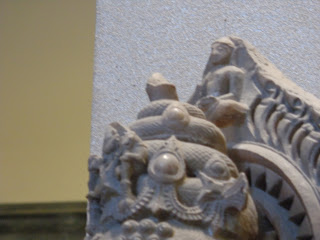Here are some pictures of the hindu temples of the temple city (Bhubaneswar). In regards to age, the temples are from about 6th century A.D to 12th century A.D. One can see the progression of hindu temple architecture over many centuries. The earliest temples were relatively simple in their outward structure with very few surface decorations. The surface of the the temples was relatively smooth all along. With time, the temples were adorned on the outside more profusely and the size of the temple also increased with the addition of rooms. The first two images are of temples from 6th to 8th century A.D. Compare them to the temples of 9-10th century A.D and 11-12th century A.D period (photos shown below) to see the progression of temple architecture in the Kalinga region i.e., Orissa region.
Below are hindu temples from 8th-9th century A.D:
Below are hindu temples from 10th-11th century A.D:
Hindu temples representing Kalinga architecture from 11th-12th century A.D:
Below are hindu temples from 10th-11th century A.D:
Hindu temples representing Kalinga architecture from 11th-12th century A.D:














